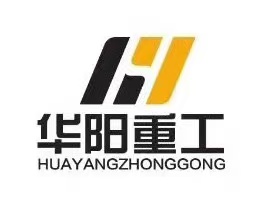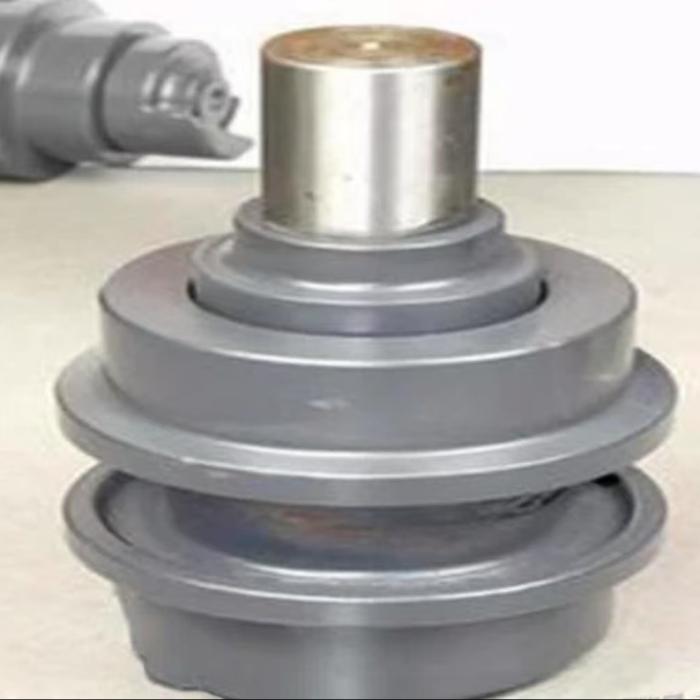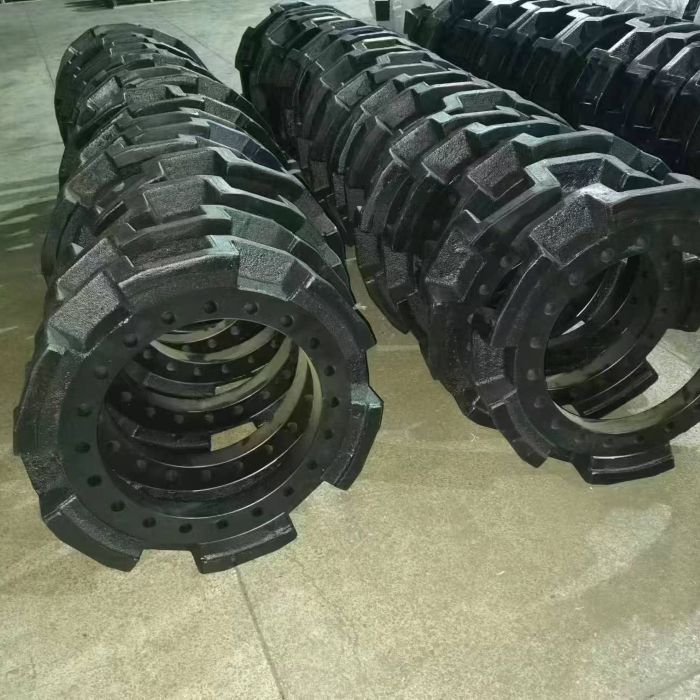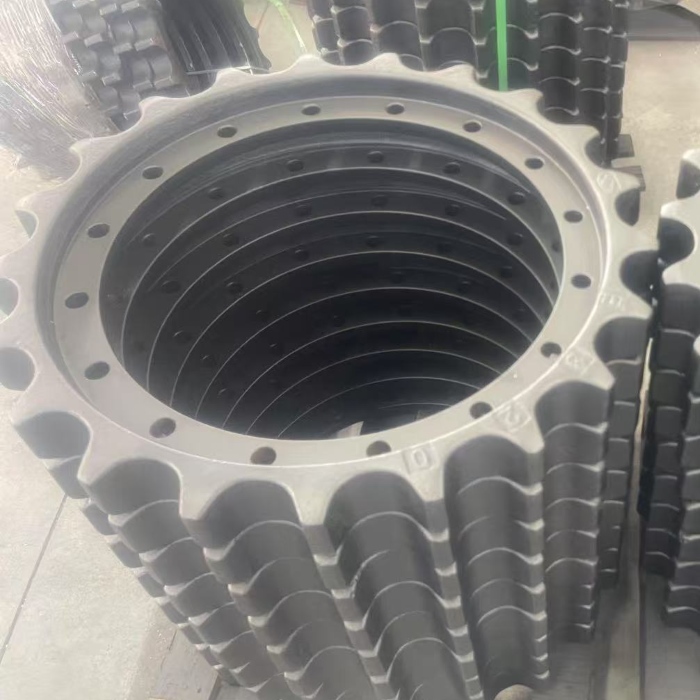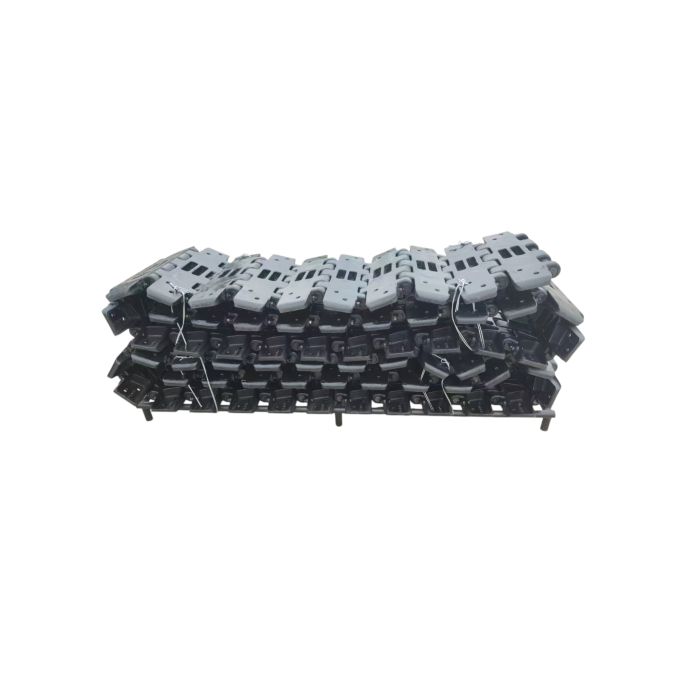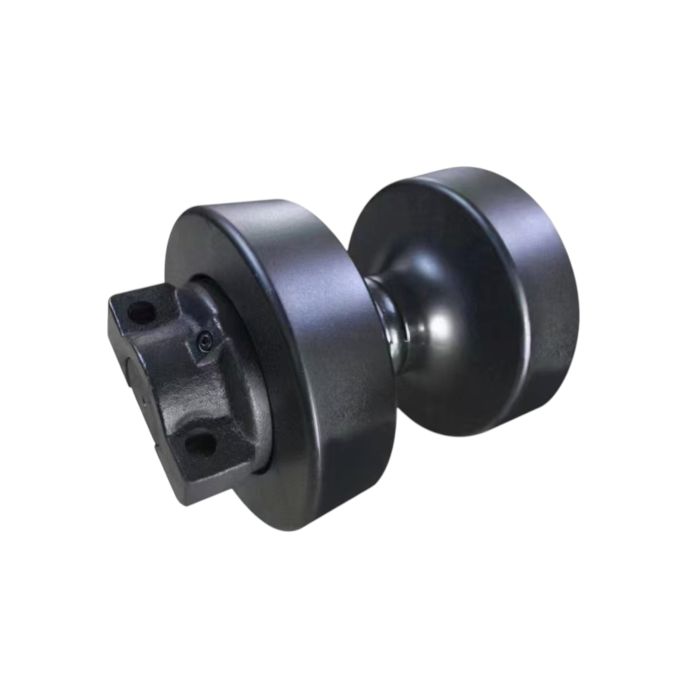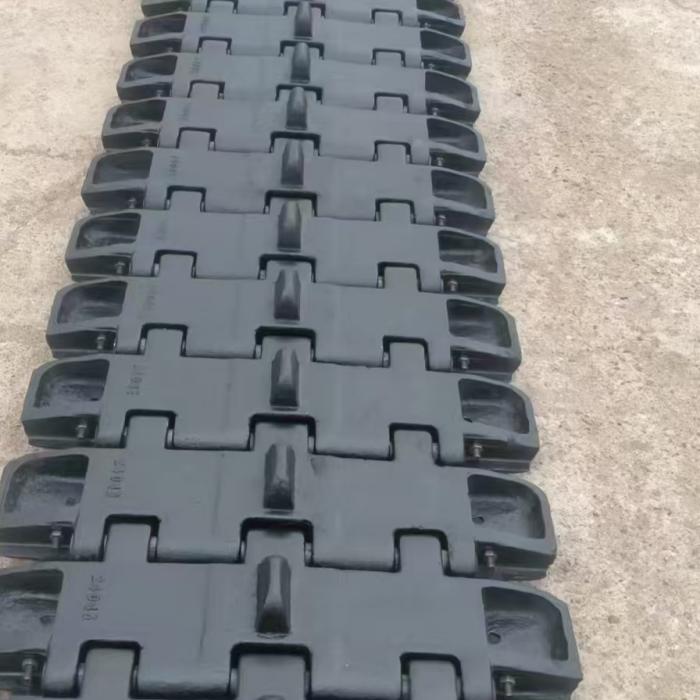Track shoe and pad structure:
Most excavators use three-ribbed track shoes and pads, while a few use flat-bottomed track shoes and pads. When designing three-ribbed track shoes and pads, the ground contact pressure and the volume of soil contact between the ribs and the ground must be calculated to ensure the necessary adhesion. Secondly, the track shoes and pads should have high bending strength and wear resistance. Three-ribbed track shoes and pads typically have two mud removal holes. As the track shoes and pads rotate around the drive wheel, the gear teeth automatically remove mud from the track link. Therefore, the mud removal hole should be located between the two screw holes that secure the track shoes and pads to the track link.
Track shoe and pad wear patterns:
During normal operation, the track pin slowly rotates backward in the pin hole, causing both to wear evenly, with the pin hole gradually becoming larger and the pin gradually becoming thinner. Improper operation, such as high-speed cornering, sudden starts, or driving into mud, water, or weeds, can cause the pins to become jammed. This can cause the left and right sides of the track shoes and pads to sag under excessive pressure. The pins become deformed and bent, preventing them from rotating within the pin holes. Sliding friction between the pins and the pin holes occurs, with the friction limited to a small contact area. The pins gradually wear into a curved shape, and the pin holes become elliptical. The larger pin holes also increase the track pitch (the distance between the center holes of the track shoes and pads). This causes the track shoes and pads to rub against the drive wheels, wearing through them and leaving the drive wheel teeth with a knife-like shape. Measurements show that when the pitch increases from 174 mm to 184 mm, the opening width of the drive wheel teeth increases from 87 mm to 97 mm.
This completely disrupts normal rolling engagement. The longer pitch of the track shoes and pads also causes the track wheels to jerk during travel, accelerating wear on the track shoes and pads' track surface. Repairs should be made if the track surface sags greater than 4 mm. Wear on the guide portion of track shoes and pads is primarily caused by track deviation, severe deformation of the track shoes and pads, and excessive axial play between the track rollers and guide wheels. Common causes of scrapped track shoes and pads are severe wear or wear through the meshing area with the drive wheel.
Track shoe and pad repair:
Track shoes and pads wear primarily in two locations: the raceway surface and the track pin holes. Repair is simple. If the raceway wear creates a groove no deeper than 2-3 mm, it can be directly welded flat. For deeper wear, fill the groove with steel bars of varying sizes, depending on the specific situation, and then weld securely from all sides. Pin holes that have been enlarged should be restored to their original size and center position. To do this, cut the worn pin hole, insert a standard-sized pin, heat it to approximately 800°C, fold the edges of the lug, and securely weld a semicircular iron plate to the cut. Repaired track shoes and pads in this manner can last for over 100 shifts.
Huayang Heavy Industry specializes in the research, development, manufacturing, and sales of equipment, heavy industrial equipment, mining machinery, and various mechanical parts. Since its founding, our goal has been clear: to provide customers with more reliable equipment, enabling them to work better, safer, and more efficiently. What services can we offer? Our business covers a wide range of areas, including: 1. Oil drilling machinery; 2. Construction equipment; 3. Metal structure manufacturing and processing; 4. Agricultural machinery parts production. We also regularly provide educational information on four-wheel drive products on our website. If you like our content, please bookmark it!
